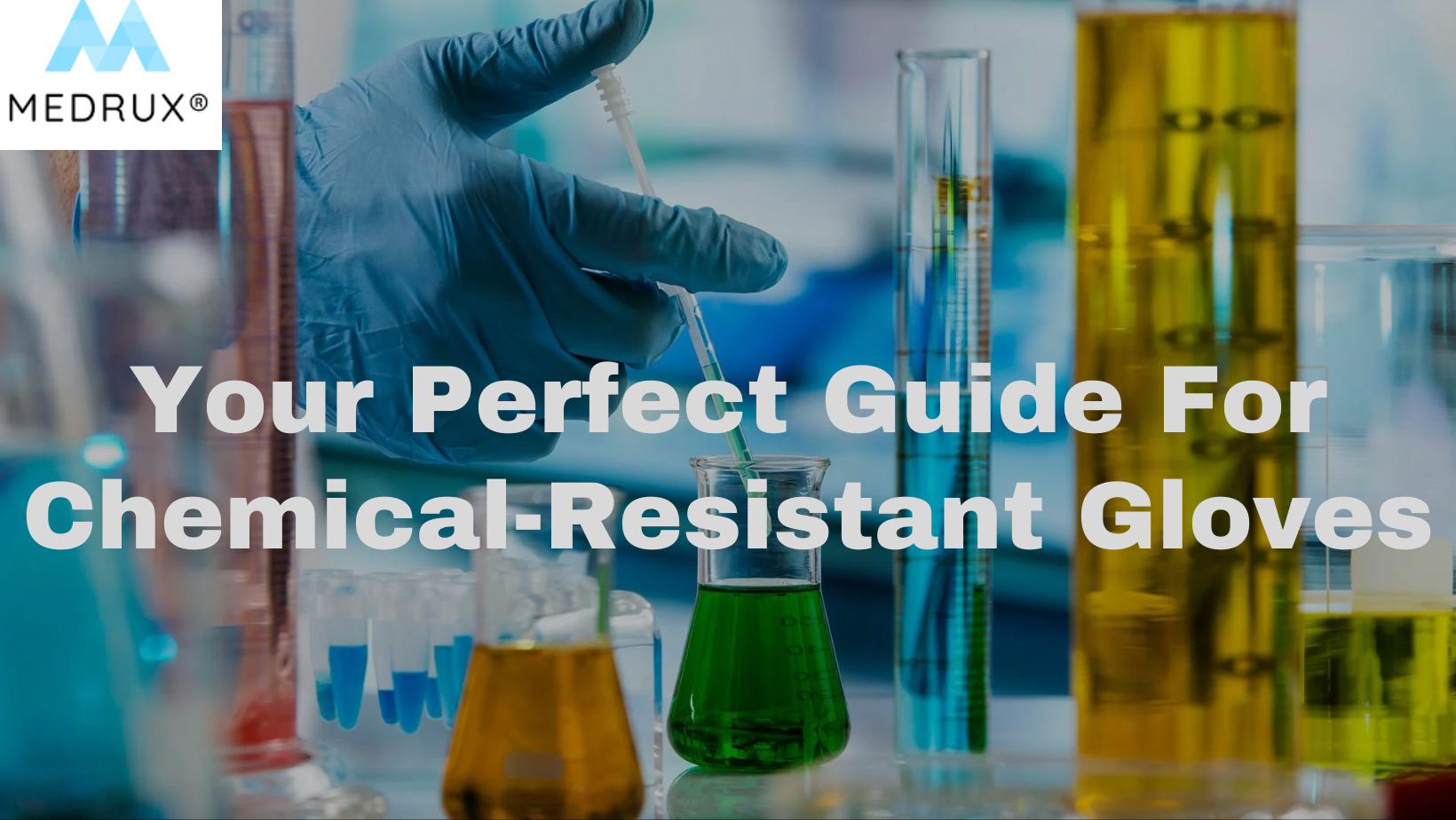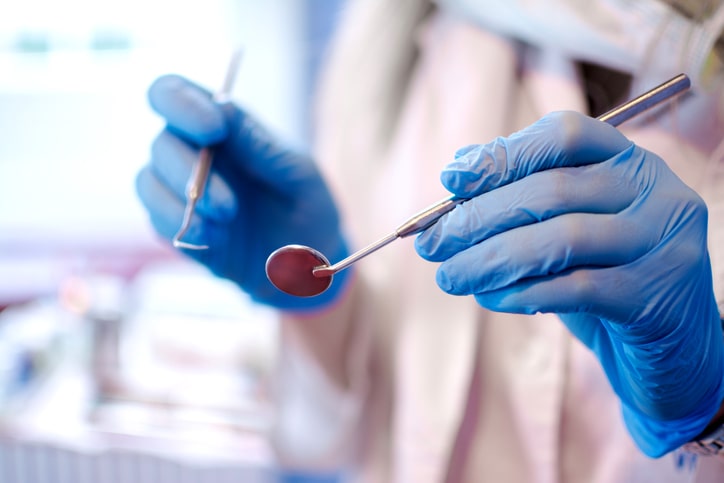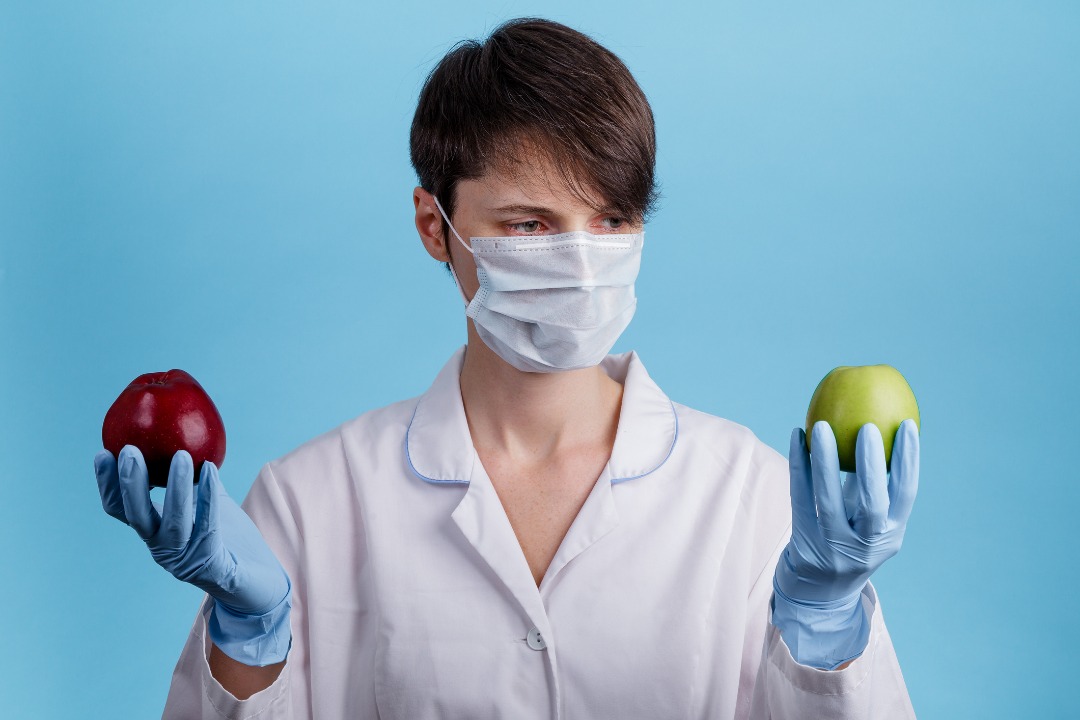It comes as no surprise that the use of disposable gloves has increased significantly during the pandemic. All over the globe, they have been used as a protective measure from the invisible dangers we face.
Additionally, disposable gloves have always been an essential part of the medical protective gear.
But how effective are disposable gloves in protecting us from germs and microbes?
How Do Medical Gloves Work?
And many other questions that are indeed running in your mind now!
Since the beginning, gloves have been used as a protective measure against cold, heat, chemicals, and diseases.
Yet, the use of gloves as a barrier against bacteria and micro-organisms in 1894.
When William Stewart Halsted presented the first rubber surgical gloves in the US. Since then, rubber gloves have been used as a protective measure against hospital-acquired infections (HAIS).
Therefore, in this article, we will be discussing the difference between sterile and non-sterile gloves. Moreover, we will also shed some light on the risks of using disposable gloves. Afterward, we will examine the emerging antimicrobial gloves and their properties. Let’s start!
Sterile gloves Vs. Non-Sterile
Disposable gloves used in healthcare are divided into sterile and non-sterile gloves.
Sterile gloves are mainly used for invasive procedures. At the same time, non-sterile gloves can be used for physical examinations.
Why don’t we dig a little deeper into the difference between these two products?
-
Non-sterile gloves
Many physicians usually use non-sterile nitrile or latex gloves.
Although latex gloves have been in use for longer, they were found to cause allergic reactions in patients.
Therefore, nitrile gloves seem to offer a safer and more durable alternative. Click here! Ore about the nitrile glove’s attractive qualities?
You might be wondering how these gloves are used in a medical setting if they are not sterilized?
The answer is simple.
Even though these gloves are not sterilized, the FDA regulates their manufacturing process.
They must have an Acceptable Quality Level (AQL) ranging from 1.5 to 2.5. This means that only up to 2.5% of gloves are allowed to have pinholes.
-
Sterile gloves
On the other hand, they undergo a process of sterilization to ensure they are germ-free.
How does that happen?
There are two main methods used to sterilize disposable gloves. They can be subjected to Ethylene Oxide or Gamma radiation.
Since surgeons deal with open wounds all the time, so, they most commonly use sterilized gloves during procedures.
That’s why the AQL for sterile gloves must be lower than 1.5. And they are individually wrapped to maintain sterilization.
Bottom line:
- Sterile and non-sterile gloves are both used in the medical setting.
- Both types of gloves must follow FDA regulations.
Confused about what to choose? sterile or nonsterile? Check our comprehensive article!
Let’s now move forward and talk about the risks…keep reading!
What Are the Risks of Using Disposable Gloves?
We use gloves to protect us from germs. But sometimes, they can do the exact opposite of that.
Are you wondering how?
Here are some of the ways gloves can lead to the spread of germs and pathogens.
-
Cross Contamination
When you first touch a contaminated surface, the germs found on that surface sticks to your gloves. Cross-contamination happens when you then go ahead and touch another surface, object, or person.
Therefore, if you’re not careful while wearing your gloves, you can easily use them to transfer bacteria.
Cross Contamination in A Hospital Setting!
Hospitals are supposed to be one of the most sanitized places on Earth. Yet, 1 in every 25 patients in the US was diagnosed with a hospital-acquired infection (HAI)
Are you wondering now what HAIs are?
Hospital-acquired infections, also known as hospital-associated infections (HAI), are infections that were not present in the patient’s lab results when first admitted to the hospital.
This means that the patient was infected during his stay in the hospital. Many pathogens were found to cause HAIs.
However, Methicillin-resistant Staphylococcus aureus (MRSA), Pseudomonas aeruginosa, Escherichia coli, and other non-pseudomonas Gram-negative bacteria are the most common.
These pathogens can cause surgical site infection and prolonged hospital stay.
-
Permeability
Disposable gloves usually have pores and therefore are permeable to bacteria and viruses.
Thus, the longer you wear the gloves, the higher the chances of a pathogen penetrating those pores. This is why health care workers wash their hands after removing disposable gloves.
Can health care workers minimize the risk of permeability?
Yes. They can use double gloving as a risk minimization technique.
-
False Protection
If you feel completely protected when wearing disposable gloves, then you’re probably experiencing false protection.
How is that?
One can easily get infected while wearing disposable gloves. If you keep touching your face or personal belongings after touching other contaminated surfaces, you will be at high risk of infection.
-
Reckless Disposal
Reckless disposal of used gloves can be of great danger as it can cause widespread bacteria and viruses.
Therefore, gloves should be disposed of properly to prevent further contamination and disease spread.
Bottom line:
-
- Be aware of cross-contamination when wearing disposable gloves
- Know that your gloves have pores, so make sure you wash your hands after taking them off
- Avoid touching your face or personal belongings when you’re wearing gloves
- Dispose of your gloves in trash bins or designated areas
Thus, the effectiveness of regular disposable gloves -whether sterile or not- became a matter of question.
And that’s why antimicrobial gloves were introduced to the market…Let’s know more about antimicrobial gloves.
What are antimicrobial gloves?
In 2018, the world’s first antimicrobial gloves were released.
They use a built-in antimicrobial technology that reduces the spread of infections by killing pathogens.
-
How does this technology work?
The gloves contain an active micro-organism-killing molecule explicitly designed to prevent bacterial spread.
But let’s dig deeper into the matter….
Antimicrobial gloves have an active ingredient called chlorhexidine (Gardine).
What is gardine?
Gardiner is a photosensitizer that produces singlet oxygen when exposed to light. This singlet oxygen oxidizes the bacteria’s protein and lipid, leading to the death of the microbes.
This means that the oxidized oxygen manages to stop the bacteria from growing and duplicating, thus, leading to its death.
Therefore, whenever the gloves contact any bacteria, it manages to kill it immediately.
If you’re worried now about bacterial resistance, don’t.
The possibility of bacterial resistance to the gloves was assessed and found to be non-significant.
The non-specific nature of the bacterial killing process helps in reducing bacterial resistance. Therefore, the use of antimicrobial gloves can help lower the use of antibiotics globally.
But how exactly is the active ingredient incorporated within the gloves?
-
How are antimicrobial gloves manufactured?
There are two different methods to manufacture antimicrobial gloves as follows;
The first method takes place by adding small amounts of the gardine dye to the surface of the gloves. The gardine then generates active oxygen using light energy—finally, the developed oxygen bonds to the glove surface.
The second method involves adding the gardine dye to the latex glove mixture before manufacturing the gloves.
So, by now, you know how it works? But you need to know more and more!
Let’s talk about antimicrobial gloves Vs. Regular ones!
Antimicrobial gloves offer several advantages that are not present in regular gloves, as follows;
-
- A 99.999% killing rate within 5 minutes of contact, including MRSA
- The ability to prevent cross-contamination
- They are non-leaching of water, sweat, saliva, and ethanol
- A long shelf life
- Finally, they are protective against HAIs
-
Are antimicrobial gloves only used in medical settings?
Antimicrobial gloves are popular in surgeries, hospitals, and dental clinics.
However, they can be highly beneficial when used in the food industry. As antimicrobial gloves use significantly lowers the risk of food contamination.
The built-in antimicrobial technology is used to manufacture breathable fabric gloves. Thus, introducing a reusable and more efficient alternative to regular gloves.
Bottom line:
-
- Fabric antimicrobial gloves can be manufactured to reduce costs.
- The use of antimicrobial gloves revolutionized the food industry as well.
- Antimicrobial gloves use new built-in technology to kill micro-organisms on contact.
- The gloves have a low risk of bacterial resistance; thus, they can be used in different settings.
What it’s all about…
Throughout this article, we discussed the difference between sterile and non-sterile gloves.
Moreover, we explained that both products follow FDA regulations and must maintain a certain AQL. The AQL for sterile gloves must be below 1.5, while that of non-sterile gloves can reach 2.5.
On the other hand, we have explained that both products are used within the medical setting. Yet, they are used to perform different procedures. Then, we stated the risks of using disposable gloves.
Bottom line:
-
- Cross-contamination can happen due to touching contaminated surfaces and transferring the bacteria to a clean surface.
- Permeability can result in pathogens penetrating the pores found in gloves to reach the skin surface.
- The sense of false protection results in spreading the pathogens to one’s personal belongings.
- Reckless disposal of gloves can lead to the spread of infections.
Finally, we evaluated antimicrobial gloves and the advantages they have. And how they manage to kill micro-organisms within 5 minutes of contact.
Antimicrobial gloves provide a safer and more efficient alternative that can be used in different settings to protect from germs. The advantages of antimicrobial gloves make them the perfect product for medical and non-medical backgrounds.
We have reached the end of our article, and we hope you find all the information you need!
Hajar Nagdy is a microbiologist and a lecturer. Nagdy holds a Bachelor’s degree in the fields of microbiology and environmental sciences, and she is now a M.Sc. candidate in microbiology. In her free time, she can be found listening to classical music, reading interesting scientific articles, running a charity, or traveling across Europe.








